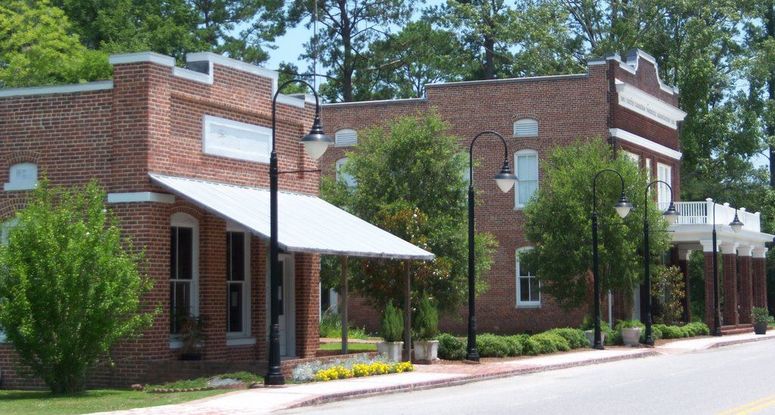About the Town of Meggett
Meggett is a historic coastal railroad town located just south of Charleston, SC. Chartered in 1905, Meggett rose to prominence as a major Lowcountry freight hub in the 1920s, connecting the waterway freight system and truck farmers. The town also served as a major distribution point for the second largest oyster and fish cannery in the state. At one point in our history, we were even named the Cabbage Capital of the World.
The source of this prosperity was the rich soil on which the town is situated, coupled with a spur of the Atlantic Coast Line Railroad and a large wharf on Yonges Island. The primary crops were cabbage and potatoes. To better market their crops, a group of farmers banded together to form the South Carolina Produce Association. Shortly after World War I, the group built a brick office building to accommodate the office staff, which brokered deals nationwide using ticker tape and the telephone lines.
At this time, Meggett was the hub of the area including the communities of Yonges Island, Ravenel, Adams Run, and Drainage (what would later become Hollywood). The telephone operator, who was known familiarly as "Central," managed the system from a two-story wing at the rear of the Produce Association building. Party lines were the order of the day. A librarian was also quartered in the same building.
The Exchange Bank was established by Charles Walker Geraty during Meggett’s heyday for two reasons: There was no bank and to occupy his wife, Bessie, who was grieving the loss of a child. The Geraty's operated the Exchange Bank, which was housed inside the Produce Association, for 30 years before merging with a bank chain in the 1950's.
The Produce Association lasted only until the mid-1930's, but the town prospered until the 1960's. The train brought passengers and mail to Meggett twice daily and picked up produce from the packing shed across the street.
Today, Meggett is a peaceful community boasting awe-inspiring views, charming homes, and welcoming families.
The source of this prosperity was the rich soil on which the town is situated, coupled with a spur of the Atlantic Coast Line Railroad and a large wharf on Yonges Island. The primary crops were cabbage and potatoes. To better market their crops, a group of farmers banded together to form the South Carolina Produce Association. Shortly after World War I, the group built a brick office building to accommodate the office staff, which brokered deals nationwide using ticker tape and the telephone lines.
At this time, Meggett was the hub of the area including the communities of Yonges Island, Ravenel, Adams Run, and Drainage (what would later become Hollywood). The telephone operator, who was known familiarly as "Central," managed the system from a two-story wing at the rear of the Produce Association building. Party lines were the order of the day. A librarian was also quartered in the same building.
The Exchange Bank was established by Charles Walker Geraty during Meggett’s heyday for two reasons: There was no bank and to occupy his wife, Bessie, who was grieving the loss of a child. The Geraty's operated the Exchange Bank, which was housed inside the Produce Association, for 30 years before merging with a bank chain in the 1950's.
The Produce Association lasted only until the mid-1930's, but the town prospered until the 1960's. The train brought passengers and mail to Meggett twice daily and picked up produce from the packing shed across the street.
Today, Meggett is a peaceful community boasting awe-inspiring views, charming homes, and welcoming families.

